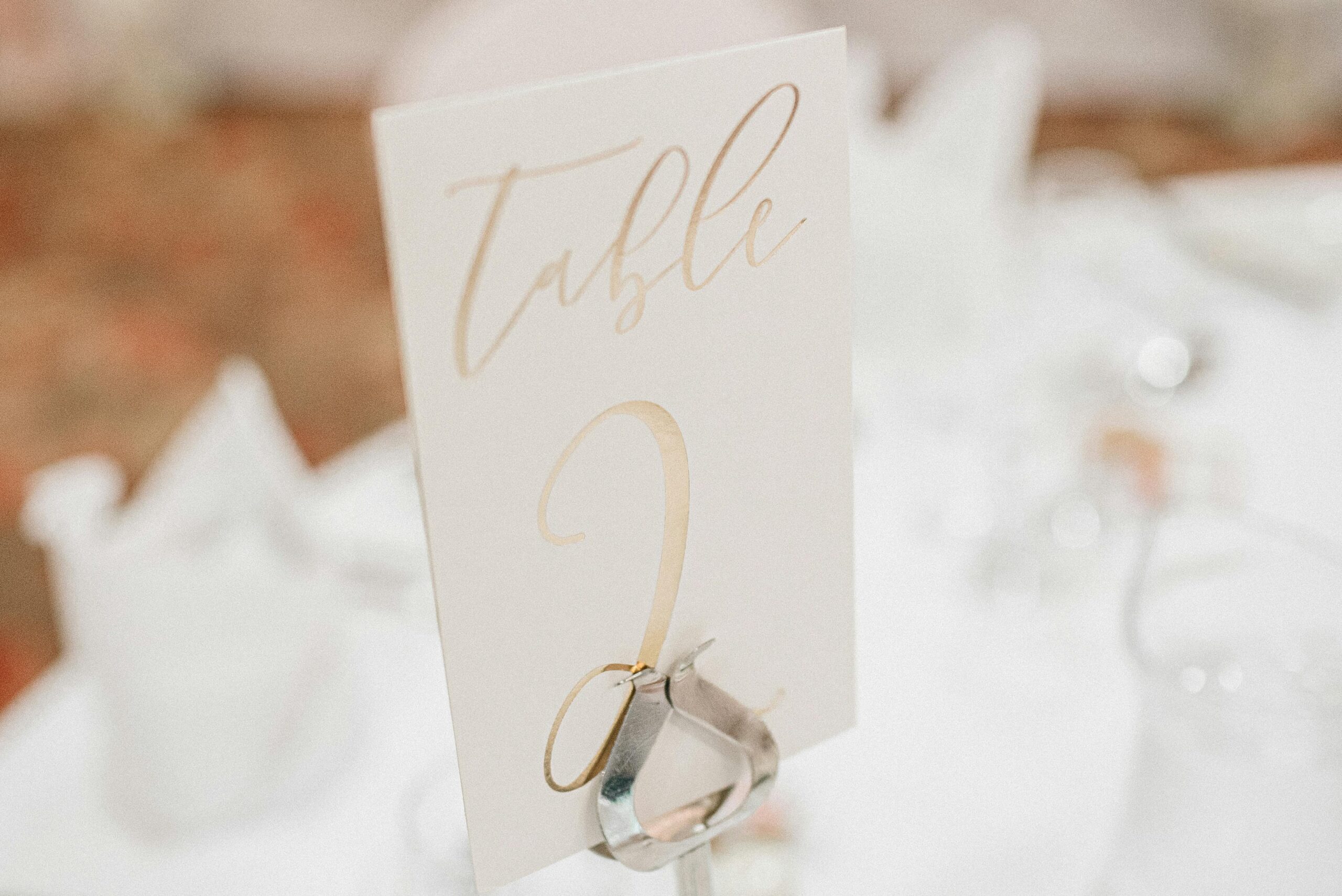How to Create the Perfect Wedding Seating Chart Without Stress
Planning your wedding involves countless decisions, big and small, but one that often sneaks up on couples is the seating chart. Many assume their wedding planner will take care of it, but this task typically falls on the couple because—let’s face it—you know your guests best.
But don’t panic! A well-thought-out seating chart helps keep your reception running smoothly while avoiding awkward encounters or confusion. Whether you’re hosting an intimate gathering or a grand celebration, these expert tips will help you create a seamless seating arrangement for your wedding day.
Do You Need a Wedding Seating Chart?
Before diving into the logistics, ask yourself: Does your wedding really need a seating chart? While open seating works for some, structured arrangements help keep things organized and comfortable for your guests. Answer the following questions to determine whether assigned seating is right for your event:
- Are you hosting a seated meal for 50 or more guests?
- Do you have guests who don’t know each other well?
- Are there individuals who must be seated separately due to conflicts or preferences?
- Is your meal service formal and plated?
If you answered yes to one or more of these questions, then a structured seating arrangement is the way to go. Having a seating chart helps avoid last-minute confusion and ensures your guests have a great experience.

Where to Begin: Assigning Tables vs. Seats
Once you’ve decided to create a seating chart, the next question is: Should you assign tables or individual seats? Each option offers its own benefits:
Assigning Tables
- Guests are assigned a specific table number, but can choose their seat at that table.
- Provides flexibility while still ensuring groups sit together.
- Works well for semi-formal weddings where mingling is encouraged.
Assigning Chairs
- Guests receive a precise seat assignment, leaving no room for seating disputes.
- Ideal for large events where structure is necessary.
- Best suited for formal receptions or weddings with plated meal service.
Most couples opt for table assignments, for easy logistics. However, chair assignments can be useful if you need to carefully arrange family members, bridal party members, or VIP guests.
Step-by-Step Guide to Creating Your Wedding Seating Chart
Once you’ve decided on your approach, it’s time to map out your seating chart. Follow these steps for a stress-free process:
1. Set Your RSVP Deadline
Your final guest count is the foundation of your seating plan, so set your RSVP deadline at least 4 to 6 weeks before your wedding day. This gives you enough time to follow up with missing responses and finalize the arrangements. At the very latest, aim for all confirmations two weeks before the big day to avoid last-minute stress.
2. Sketch Out Your Reception Layout
Grab a whiteboard, poster board, or even digital seating tools to sketch your reception venue’s floor plan. Map out tables as circles or rectangles, then use sticky notes or digital placeholders for guest names—this makes it easy to adjust placements as needed.
3. Prioritize Your Special Tables
Decide how you’ll arrange the newlyweds, the wedding party, and immediate family. Consider these setups:
- Sweetheart Table: Just for the couple, offering a private space to enjoy the moment together.
- Head Table: Includes the couple, wedding party, and sometimes their significant others.
- Family Tables: Place parents, grandparents, and close relatives together.

4. Consider Guest Dynamics
Carefully place guests to create a fun and enjoyable atmosphere. Keep these factors in mind:
- Friend Groups & Coworkers: Sitting together encourages conversation and ensures guests feel comfortable.
- Elderly Guests: Position them away from speakers and close to restrooms for convenience.
- Separate Potential Conflicts: Avoid placing exes, feuding family members, or guests with personal history too close to each other.
- Mix Introverts & Extroverts: A balanced mix keeps conversations lively without overwhelming quieter guests.
5. Use Seating Chart Tools
Online seating chart planners help visualize arrangements in a user-friendly format. Try platforms like AllSeated, WeddingWire, or Zola to streamline your planning.
6. Create Escort Cards or a Seating Display
Once finalized, decide how to present your seating chart at the reception entrance. Options include:
- Printed Seating Charts: Display a beautifully designed board listing guests’ table assignment.
- Escort Cards: Small personalized cards guiding guests to their seats.
- Place Cards: Placed directly on tables to indicate each guest’s seat.

Extra Tips for a Flawless Seating Plan
Even with a well-planned chart, last-minute changes can arise. Keep these strategies in mind:
- Leave Room for Adjustments: Expect a couple of seating swaps due to unexpected guest cancellations or additions.
- Consider Accessibility Needs: Ensure guests with mobility issues have comfortable seating and easy access to amenities.
- Seat Toast-Givers Centrally: Speakers and toast-makers should be seated close to the stage or microphone for convenience.
- Have a Backup Plan: Prepare a few extra seats in case of unforeseen changes.
Final Thoughts: The Power of a Thoughtful Seating Chart
Your wedding seating arrangement sets the tone for your reception, influencing conversation, atmosphere, and guest experience. A well-organized chart minimizes stress and ensures that everyone is comfortable while enjoying your celebration.
By following these steps and planning, you’ll create a wedding seating chart that flows seamlessly and enhances the magic of your big day. Need more wedding inspiration? Visit Blissfully Wedded for expert guidance!

